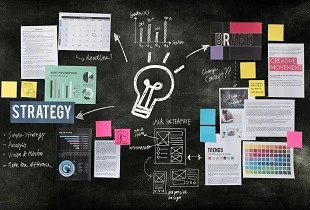Achieving regulatory compliance excellence through digitalization
Learn how to keep up with legislation and regulations that are constantly changing by optimizing organizational compliance
Add bookmark
Across all industries, compliance requirements and processes become more complex each year with new policies and regulations. It is a major challenge for companies to find their way through the rapidly evolving regulatory landscape and to efficiently manage compliance requirements. The digitalization of the processes that are inherent to compliance can make a major contribution.
Uncover the three pillars of operational excellence in this article from Software AG
Compliance teams are facing challenging times as increasing levels of regulation have become the new normal. In many industries and regulated markets, compliance with regulatory requirements has become an indispensable 'license to operate'.
One challenge is that the number of regulations continues to grow and new topics are constantly being added. For example, quality, data security and anti-corruption have been supplemented in recent years by new aspects such as business continuity (ISO 22301), environmental management (ISO 14001) and human rights compliance across the entire supply chain (German Supply Chain Due Diligence Act).
It is also true that many companies struggle to maintain a systematic overview and keep up with regulatory changes and that many of the compliance processes are still characterized by a high manual degree of activities, which leads to a high expenditure of time, susceptibility to errors and high costs. We have also seen that compliance and risk management are often still understood as isolated approaches without taking into account the synergy effects.
We want to take a closer look at how the requirements can be managed efficiently and, in particular, the contribution of digitalization and the optimal use of IT.
The detailed guide for effective compliance programs used to be ISO 19600, but this has been superseded by the publication of ISO 37301 in April 2021. ISO 37301 details how a compliance management system should be structured to meet international legal standards and regulations and draws on the established ISO principle of the plan, do, check, act (PDCA) approach, which requires certified organizations to work within a continuous improvement process cycle. ISO 37301 encourages companies to focus on the systematic implementation of an organization-wide compliance system.
Even if compliance aspects such as data security, quality and environmental protection may be different at first glance, the prerequisite is always an understanding of the fundamental assets of the company, which are processes, responsibilities, data and IT systems. It therefore makes sense to describe these assets only once in a structured way with the help of a repository, and to refer to them in all compliance aspects. Integrated regulatory compliance means using a common management system for all aspects instead of a dedicated system per compliance requirement.
Processes play a key role for an efficient compliance system. It has proven useful to apply the key business processes as a navigation structure, meaning to assign all policies, risks and controls to the processes of the organization.
Furthermore, it is necessary to optimally design the processes in compliance itself and to automate them as far as possible. The following workflows, which can be efficiently automated by a system such as ARIS, are the focus here:
- Regulation identification and monitoring
- Regulation interpretation and requirement allocation
- Change rollout and confirmations
- Compliance assessment and issues
- Audit planning and execution
Digitalization and the use of new technologies can significantly reduce the manual effort and costs for compliance and increase the quality of the results. The following examples illustrate this:
- Instead of manual handbooks, it is now considered state of the art to distribute policies and work instructions to employees in digital form, especially taking into account roles and responsibilities. This allows everyone to see the instructions that are appropriate for them, whether they work on an oil rig or at the supermarket checkout. Automated feedback and collaboration mechanisms allow employees to interact and share information with each other.
- Process mining technology was originally developed to identify weaknesses and optimization points in business operations. Since the processing of each individual process instance is monitored and analyzed, it has become an important application of the technology to identify deviations from the defined target processing, such as compliance gaps.
- In particular, the major advantage over manual analysis of samples is that the total set of cases can be analyzed and the analysis can be performed in such a timely manner that non-compliant cases can be detected and prevented while still being executed.
- The introduction of advanced artificial intelligence (AI)-driven solutions is another trend in the digital transformation of compliance. In particular, AI and machine learning-based chatbots and personal assistants are increasingly used when interacting with customers and employees to avoid time-consuming manual processes. They increase the productivity of compliance managers by providing real-time insights, generating reports and automating a wide range of other compliance-related activities.
- The preparation and execution of internal and external audits is also often still a highly manual process. These activities can be made much more efficient through access to a company-wide compliance repository that describes both the relevant regulations and the implementation in the company, as well as providing access to the monitoring and process mining results.
In recent years, operational functions are often the first to see digital investment with compliance usually being the last. However, the above examples show that the digital transformation of risk and compliance functions also promises enormous efficiency gains and competitive advantages.































































